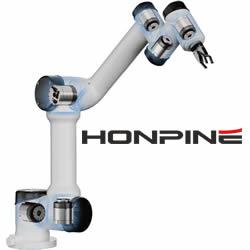By and large the people you encounter in the military and Defense are smart, dedicated, and honest. They are haunted by the specter that the equipment they procure may result in the death of American servicemen. If you have a product that can save lives, then you might just have yourself a sale.
How To Sell Robots To The Military
Contributed by | The AMREL Blog
Recently, I was asked to answer a question on the social media site Quora. I was asked, “How does a person get their robot design/prototype bought by the U.S. military?” Here is my answer:
This is one of those “if you have to ask, forget about it” questions. Selling to the American military is a world in itself, and your best bet is to partner with someone who has direct experience with Defense acquisition.
I work for AMREL (American Reliance). It makes rugged computers that are the platforms for Operator Control Units for Unmanned Ground Vehicles (UGV). While I have never directly dealt with military procurement, I have had many conversations with salesmen who have.
Keeping in mind that I am not an expert, this is my general impression of what is involved:
- Target the specific bureaucracy: What kind of unmanned system you make will determine who you sell it to. ARMY likes Tactical Unmanned Aerial Vehicles (TUAV). The NAVY’s Advanced Explosive Ordnance Disposal Robotic System (AEODRS) is responsible for IED-detecting UGVs. The AIR FORCE flies the big Predator drones that you hear so much about in the news. (BTW, as you can tell from this paragraph, be prepared to learn acronyms. LOTS of acronyms.)
Keep in mind that the Department of Defense (DoD) is a bit like the universe, i.e. big, mysterious, and mostly invisible. Finding out who might want to buy your robot and who is the appropriate person to contact can be challenging.
- Ninety percent of sales is listening: Nowhere is this more true than in military sales. I don’t care if your robot can travel backwards in time, and makes non-fattening chocolate cake; if it doesn’t meet their requirements, the DoD is not interested. Find out what THEY want and then make it. From time to time, various elements of military hold public events that vendors can attend. Sometimes it’s just a table-top tradeshow or big-time demos like theRobot Rodeo. These are valuable places to gain info. Do a net search, plan your travel itinerary, print up some datasheets, and above all LISTEN.
- Be prepared to make changes, LOTS of changes: If the military is interested in your robot, it will go through an enormous amount of testing and approvals. This can take quite a bit of time. Large weapon systems have been known to spend decades in development. With every stage, you will receive feedback about what needs to be altered. End-user feedback is considered especially critical.
- Be prepared to spend money: Traveling around the country and preparing the appropriate documentation are expensive undertakings. And that’s not even counting the expense of multiple prototypes. AMREL has carved out a niche for itself in customizations of rugged computers for low volume orders with low-to-no NRE. This enables developers to make economical prototypes for the reiterative development process.
- You may end up selling to a big Defense contractor, rather than directly to the DoD. These guys are called “primes.” If you are making a garlic-sniffing submersible unmanned system, and Fat Cat, inc. holds the contract for this kind of robot, you have to sell to them. Just as you need to learn the intricate labyrinthine ways of the DoD, you are going to have to study the quaint and colorful traditions of Fat Cat if you want to do business with them. There are advantages and disadvantages to selling to primes, which is a whole other answer.
- Be prepared to spend lots of time. I was at a conference in which about half a dozen representatives of Defense primes were up on a stage answering questions. When asked “How long does it take to get a contract,” the average answer was 5 years.
- Make your robot cheap. The DoD may have more money than anyone else, but it’s under enormous pressure to be economical. They want solutions that save money.
- Can you buy parts for your robots off the shelf? The DoD used to spend big bucks on specialty items. Not anymore. They want to buy parts at the local big box store. The magic word is “Commercial Off The Shelf (COTS).”
- Does your robot work and play well with others? In this case, the magic word is “interoperability.” AMREL has been able to dominate the OCU market, because we came up with an interoperable solution that worked on multiple UGVs. Other companies created proprietary control systems that worked only on one robot. This caused a logistical nightmare for the DoD.
- Don’t believe the headlines about corruption and incompetence. Yes, the Defense procurement process is a mess. Why is a whole other answer. But it’s not the fault of typical DoD personnel. By and large the people you encounter in the military and Defense are smart, dedicated, and honest. They are haunted by the specter that the equipment they procure may result in the death of American servicemen. If you have a product that can save lives, then you might just have yourself a sale.
The content & opinions in this article are the author’s and do not necessarily represent the views of RoboticsTomorrow
Featured Product

